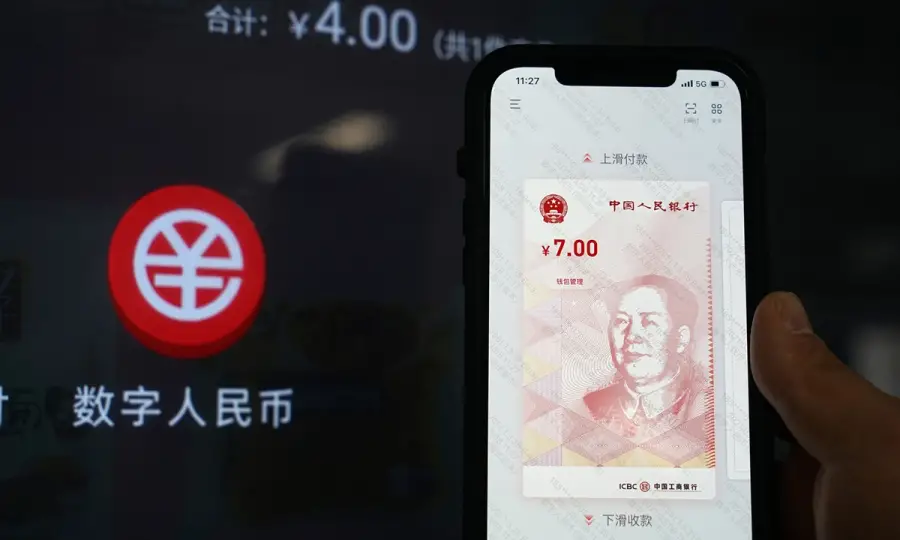
Cryptocurrencies such as Bitcoin are posing a significant threat to the established global financial order, the dominance of the dollar as a reserve currency, and the traditional banking industry. Many countries have responded to this disruptive innovation by imposing bans on crypto assets. China has been at the forefront of paying attention to the underlying technology of this fintech phenomenon, as evidenced by its successful launch of the world’s first cryptocurrency issued by a central bank. This has ignited a race for digital currencies supremacy, the frontier of the new Cold War.
To understand central bank-issued digital currencies, one must first appreciate the technological marvel that Bitcoin represents. Bitcoin, the most well-known digital asset, emerged as a new transnational currency during the 2008-2009 economic crisis. Its anonymous founder aimed to create an opportunity for the free transfer of a “virtual currency” via the Internet. The idea of a financial system independent of centralized banking authorities, which had no immediate solution to the economic collapse at the time, was certainly appealing.
The Bitcoin network operates and is maintained by peers, with every transaction recorded on a public ledger called a blockchain. This also means that the supply of Bitcoin cannot be altered or manipulated, as every transaction is confirmed by the network’s participating nodes. This unique quality of scarcity is absent in regular currencies that can be overproduced by governments during crises, leading to inflation. With the decreasing purchasing power of the dollar and the banking crises, ordinary people were increasingly looking for an alternative, and Bitcoin delivered on that front.
The traditional banking system quickly began to appear outdated as early adopters of Bitcoin withdrew their funds from banks. This prompted stakeholders in the banking sector to realize that significant changes needed to be made to remain relevant. Lobbying governments to impose bans on cryptocurrencies and deny business licenses to crypto exchanges helped to slow down the adoption of Bitcoin, but it would not be enough in the long run. Transactions on the blockchain were processing faster than checks, and cross-border payments were significantly streamlined as well. Banks had to innovate or risk being left behind.

During the Peer-Learning Series on Digital Money/Technology forum in July 7, 2022, Krishna Srinivasan, Asia and Pacific Department Director at the IMF, acknowledged the disruptive nature of blockchain technologies, stating that “Digital money and technologies can significantly change the landscape for financial systems and bring important benefits to the public at large. Among other things, they could foster financial inclusion, create new value-added in the economy, and reduce transaction costs, including across borders.”

China has emerged as a global leader in CBDC development with the successful launch of the digital Yuan. The People’s Bank of China’s proactive approach, technological advancements, and focus on using blockchain for CBDC implementation have positioned China at the forefront of global CBDC efforts, drawing admiration and criticism in equal measure.
The PBoC initiated its CBDC project, known as the Digital Currency Electronic Payment (DCEP) project, in 2014, conducting extensive research on CBDCs. China was also one of the first countries to conduct trials of a CBDC in select cities and regions. In 2016, the PBoC announced the successful design of a test prototype of the digital Yuan, which was used in a pilot project in cities such as Shenzhen, Suzhou, Chengdu, and Xiong’an.
One of the key distinctions between China’s approach to CBDC and cryptocurrencies is that China perceives blockchain technology as a better alternative to cryptocurrencies. As a result, China has implemented regulatory sanctions on cryptocurrencies since 2017, while actively pursuing the development and adoption of CBDC.
The digital Yuan project gained prominence in 2019 when it was pitted against Facebook’s Libra cryptocurrency in public discussions. Leveraging its early-mover advantage, the PBoC successfully launched the digital Yuan or e-CNY in April 2020, making China one of the first countries to issue a CBDC.
The Chinese government has been proactive in incentivizing the use of the digital Yuan among its citizens. In June 2021, the government distributed 40 million digital Yuan through a lottery in Beijing, allowing residents to sign up through banking applications and participate in a draw for ‘red envelopes’ containing digital Yuan. By the end of June 2021, more than 20 million personal digital wallets and over 3.5 million business wallets had been installed, with the digital Yuan being used for various transactions such as public transport, shopping, and government services. The total volume of transactions during this time is estimated to be over 70 million digital Yuan.
In July 2021, the PBoC published its first and only official report on the digital Yuan, titled “Progress of Research and Development of e-CNY in China.” The report clarified that the e-CNY is a retail fiat currency in digital form, with a two-tier operating model. In the first tier, the PBoC issues and controls the supply of digital Yuan, which is then distributed to authorized entities such as commercial banks, telecom operators, and payment service providers in the second tier. These authorized entities are responsible for further distribution and activation of digital Yuan in the economy.
One notable aspect of China’s CBDC model is the use of private or permissible blockchain networks, which are closed networks accessible only to authorized nodes such as retail banks. This approach allows the central bank to maintain control over sensitive financial information and transaction details, unlike cryptocurrencies that operate on open blockchains with public ledgers of anonymous transactions.
In August 2021, the Chinese government passed the Personal Information Protection Law (PIPL), which restricts telecom companies from releasing any identity information, including to the central bank. As a result, neither the central bank, commercial banks, nor payment providers can access the personal information linked to digital Yuan transactions. The only transactions accessible to the central bank are those made through authorized institutions, ensuring privacy and data protection.
The digital Yuan has also seen technological advancements since its launch. In January 2022, the PBoC announced the integration of smart contract functionality into the digital Yuan, allowing for more sophisticated and automated transactions. This opens up possibilities for a wide range of use cases, such as programmable payments, digital contracts, and decentralized finance (DeFi) applications.
China’s progress in CBDC development has not gone unnoticed by the global community. Many countries and central banks are closely monitoring China’s experience with the digital Yuan, as it could potentially have far-reaching implications for the global financial system. Some experts believe that China’s success with the digital Yuan could serve as a model for other countries looking to develop their own CBDCs.
However, there are also concerns and criticisms surrounding China’s CBDC. One major concern is the potential for increased surveillance and control by the Chinese government, as the digital Yuan allows for greater traceability and monitoring of transactions compared to traditional cash. There are also concerns about the impact of the digital Yuan on financial stability, privacy, and cybersecurity.
Are any of these concerns founded?
If they are, shouldn’t other countries halt further trials on a CBDC?
Or is it a mere competition among economic rivals underlying these concerns?

